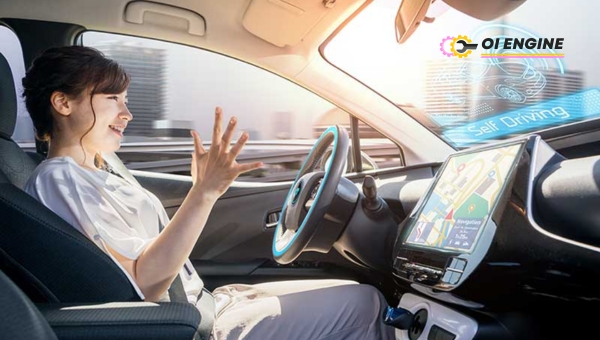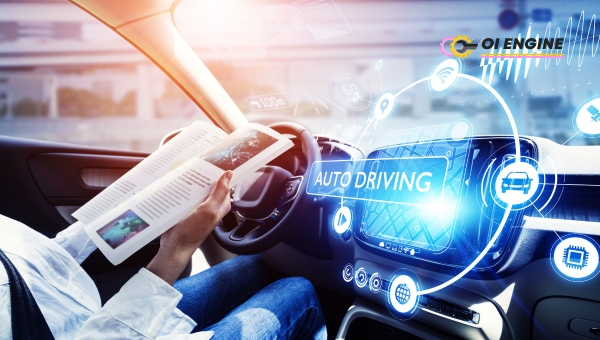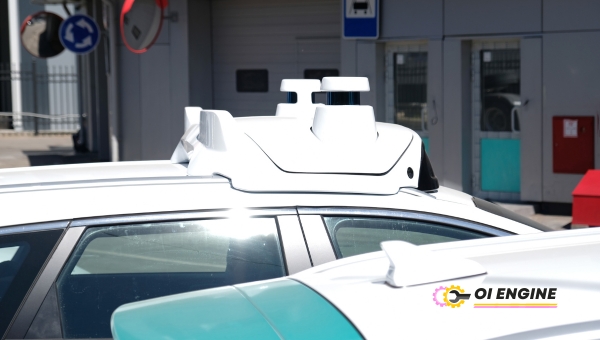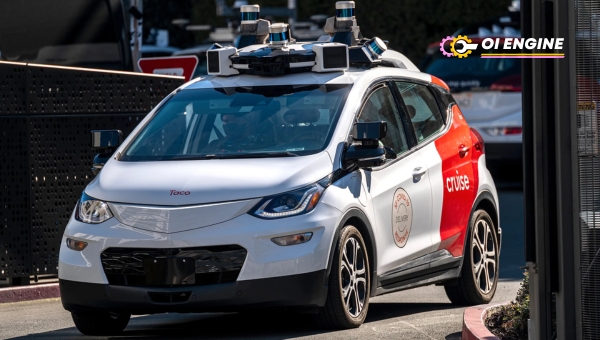Picture your daily drive to work—now imagine it without the need to touch the steering wheel at all. This is what self-driving vehicles promise, a future where cars zip around without human drivers.
The idea sounds like something from a science fiction book, but it’s becoming real faster than we think. As I ponder this shift, one question keeps popping up: How will cities and states cope with such a huge change? It’s a thought that can make you both excited and nervous.
When talking about the cities and states most threatened by self-driving vehicles, think big, crowded places with lots of cars on the roads.
These areas could see astonishing transformations because so many folks there earn their bread by driving trucks, taxis, or buses.
If those jobs start to disappear because of smart cars that drive themselves, lots of people could find themselves searching hard for new work.
The Impact of Self-Driving Vehicles on Cities & States
Emerging technology has a way of flipping how we live, work, and play on its head. One of the most significant changes knocking on our doors today is the advent of self-driving vehicles.

These vehicles, armed with artificial intelligence, are set to revolutionize transportation in ways we can only imagine.
The Advent of Self-Driving Vehicles
Self-driving cars, also known as autonomous vehicles, use advanced algorithms and sensors to navigate roads without human intervention.
With companies like Tesla leading the way, these cutting-edge machines are becoming a major topic of discussion.
The potential impact is immense. Imagine streets outlined by robotaxis efficiently ferrying people from point A to B.
This technology promises fewer traffic accidents since most are caused by human error. Plus, it would make mobility more accessible for folks who can’t drive due to age or disability.
That said, every coin has two sides. While self-driving cars can transform cities into safer spaces with smoother traffic flow, they might rattle local economies where drivers’ jobs matter a lot.
The Cities & States Most Threatened by Self-Driving Vehicles
This brings us to places like California, Texas, and Florida – states famous for their sprawling metropolises crisscrossed by long highways where driving jobs are aplenty.
In California, cities like Los Angeles and San Francisco have huge populations dependent on careers like trucking or cab services for their daily bread.
Similarly in Texas where Dallas and Austin hold thousands of people used to lives revolving around steering wheels and gas pedals.
Now picture fleets of autonomous trucks replacing long-haul truckers in these areas – the economic repercussions could be significant!
Florida too would see similar effects, especially in tourism hotspots like Orlando that rely heavily on transport-related jobs.
These three states stand pretty threatened by this technological transformation since large parts of their populations could soon find themselves competing with robots for their livelihood.
Also Read: Safeguard With Physical Damage Insurance Coverage
Impact on Driver Employment
The rise of self-driving vehicles comes with numerous blessings, and many reasons for us to cheer. Yet, despite the convenience and safety they promise, we cannot ignore the significant impact that these technological wonders will have on driver employment.

With millions of individuals making a living as drivers in various industries, we must examine the likely changes set into motion by autonomous vehicles.
Taxi and Rideshare Drivers
I think it’s relatively clear how taxi and rideshare drivers might be in trouble with the advent of self-driving vehicles.
If cars can drive themselves, it takes away the need for humans behind the wheel. This move could lead to fewer job opportunities in this sector.
On one hand, technology companies are investing heavily in creating autonomous taxis or ride-sharing services that don’t require human drivers – just look at Uber’s self-driving car initiative! On the other hand, this innovation could hamper those who rely on such jobs for their daily bread.
Truck Drivers
Hardworking truck drivers might also feel threatened by this technological revolution. Long-haul trucking could become fully automated sooner rather than later due to advancements in AI-driven logistics management.
The current prowess of self-driving trucks mainly lies with highway driving where there is less congestion compared to urban environments. This efficiency can result in drastic changes to thousands of driver jobs across country highways.
Delivery Drivers
To add another layer of complexity are delivery vehicle drivers whose roles may turn redundant owing to automation technologies too.
Drones and robots are being explored as an efficient means for package deliveries while overcoming logistical challenges within busy cityscapes.
Driverless delivery cars being tested as I write now could soon be frequenting our neighborhoods, spelling possible unemployment blues for delivery staff used to zipping from door-to-door dropping off packages or food orders!
Public Transit Drivers
Public transit isn’t immune either with cities experimenting with autonomous buses and trams as we speak. These initiatives aim to enhance public safety and increase operational efficiency by reducing human error.
Yet, we can’t ignore that this would imply a reduction in job roles for bus and tram drivers, who’ve been an integral part of the public transit framework for decades. How these changes pan out will influence the employment landscape tremendously.
School Bus Drivers
Just imagine: soon kids could be dropped off at school in self-driving buses! While this might sound like something straight out of a sci-fi movie, autonomous school bus trials are already underway in certain parts of the world.
The thought of automated buses ferrying young ones does ignite safety concerns but considering the level at which self-driving technology is being perfected, full automation seems inevitable.
This would signify yet another dent in driver employment prospects as schools may not need traditional bus drivers anymore.
Geographical Insights
There’s no denying that self-driving vehicles are creating both excitement and anxiety worldwide. But digging deeper, it’s clear certain regions will feel the impact more than others.
Let’s take a deeper look at the geographies most threatened by these high-tech wheels, followed by discussing how different states in the US could face varying levels of impact.
Specific Geographies Most Threatened by Self-Driving Vehicles
When we talk about the geographies most threatened by self-driving vehicles, several areas come to mind:
- Cities with Significant Taxi and Rideshare Industries: Cities such as New York, San Francisco, and Chicago have massive taxi and rideshare companies like Uber and Lyft. The introduction of self-driving cars could cause a significant shift in this industry, possibly leading to job losses.
- Truck Dominant Routes: Areas with concentrated heavy truck traffic like major freeways can be substantially affected as autonomous trucks begin to dominate these routes. This means highway-centric spots such as Interstate 80 across Nevada or Interstate 70 across Utah might grapple with profound economic changes.
- Public Transport Reliant Areas: Urban centers that heavily rely on public transport like buses and trams can also feel the knock-on effects of autonomous vehicles. Convenience offered by self-driving cars may lead commuters away from traditional public transport, affecting jobs in these regions.
Variations Among States
It’s crucial to understand that not every state will experience the same level of disruption from autonomous driving.
- Tech-forward States: States known for their technological advancements like California are likely to be early adopters of self-driving vehicles. Early adoption means they may face faster disruptions compared to others but might adapt more effectively due to their tech-savvy populations.
- Industrial States: Industrial states where manufacturing is deeply ingrained into their socio-economic fabric may see significant changes. As autonomous vehicle production increases, factory workers’ roles could transform significantly or disappear altogether.
- Rural versus Urban Divide: Rural areas are unlikely to see quick adoption of self-driving cars given the challenges tied to navigation on rural roads. In contrast, urban areas with well-defined road networks could see a faster shift towards self-driving vehicles. This means the impact can significantly differ between the American countryside and cities.
Those are simple sketches of how geographies are threatened by self-driving vehicles and how different states might react variously.
The arrival of autonomous driving promises to be as disruptive as it is revolutionary, reshaping our world in ways we’re only starting to imagine.
Also Read: Unlock Postal Productivity With Postage Meters
Repercussions on State Economies
When it comes to the rise of self-driving vehicles, it’s clear that they could cause real change. This doesn’t only affect me or you but also impacts various state economies.

The changes can bring both opportunities and challenges. The full effects are still hard to predict. However, we can certainly discuss a few potential economic disruptions resulting from an increase in self-driving cars along with some ways state economies might adapt.
Economic Fallouts and Adaptations
Self-driving vehicles have indeed started making waves in our economy. Now let’s talk about some possible economic fallouts due to them:
- Job Displacements: As self-driving vehicles take over traditional modes of transportation, I expect a significant cut down in driving jobs. Taxi drivers, bus drivers, truck drivers — all may feel the pinch.
- Insurance Sector Shifts: Car insurance is a major industry today because human driving involves risks leading to accidents and damages. When self-driving cars become mainstream these risks could reduce sharply changing this industry substantially.
- Parking Industry Impact: Self-driving cars can drop passengers off and then find parking by themselves further away where it is cheaper which could severely impact revenue from city center car parks.
But every cloud has a silver lining! Here are some adaptations states could make:
- Re-Skilling Programs: As the saying goes, ‘when one door closes, another one opens’. There could be job creation in other sectors such as vehicle maintenance, data analysis, and road safety technology which displaced drivers can venture into with some re-training.
- Regulation and Taxation: An increased use of autonomous vehicles means states would have to put new regulations in place and possibly devise new strategies for taxation.
- Infrastructure Development: States can seize the opportunity to enhance their infrastructure development by creating dedicated lanes or areas for self-driving vehicles.
- Tourism Boost: Without the stress of navigating unfamiliar roads, tourists might be more encouraged to travel around further boosting tourism in various places.
- Promoting Shared Mobility: With self-driving cars on the rise, shared mobility could become easier aiding the reduction of traffic congestion thus also supporting better air quality.
The arrival of self-driving vehicles could certainly upend our world economically as we know it today but with careful planning and adapting state economies can turn these threats into opportunities leading to a brighter future!
FAQs
What cities are driverless taxis stressing?
Driverless taxis are placing considerable stress on bustling metropolitans like San Francisco, Phoenix, and Pittsburgh, known for extensive Uber and Lyft operations. The introduction of self-driving vehicles threatens to overhaul these cities’ transport networks.
What states are self-driving?
Technically no state is completely ‘self-driving’. However, several states including California, Arizona, and Michigan have permitted the testing of these autonomous vehicles due to their forward-thinking approaches toward innovation.
Why are self-driving cars a threat?
Self-driving cars pose a disruption risk to cities and states in economic terms. They threaten many employment roles associated with driving such as taxi drivers or truckers. This rapid technological advancement could result in significant job losses across many sectors.
What is the biggest challenge of self-driving?
The biggest challenge faced by self-driving technology is safety assurance. Despite dramatic technological advancements, concerns remain over how these autonomous vehicles react under unpredictable conditions or intricate traffic scenarios without human judgment involved.
Also Read: Find 14 Best Car Shipping Companies for Safe Delivery
Conclusion
The rise of self-driving vehicles is likely to cause a significant shift in cities and states across America. Many people, specifically those in driving-related occupations, may face job displacement.
There are also plenty of opportunities for new roles and professions to emerge. Furthermore, with proper strategic planning and policy-making on a state level, potential economic disruptions can be mitigated.
Then again, the advancements self-driving vehicles bring to our daily mobility can’t be ignored. Therefore as threatening as they might sound for some sectors right now, their overall benefits might just outweigh the risks they pose.
